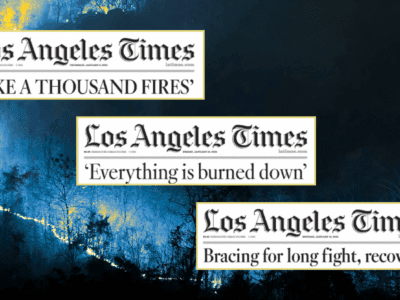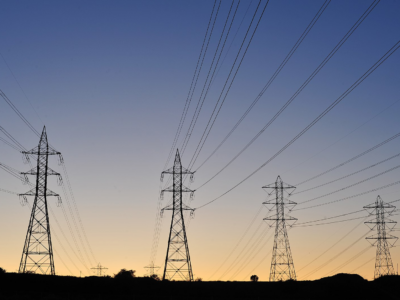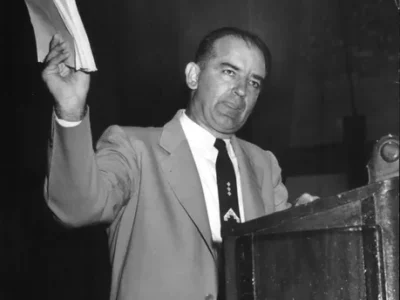Wildfires and the Cost of Electric Service
It turns out, electric transmission is not as cheap as we thought it was.
Economists detest externalities – those nasty hidden costs that businesses don’t face when they sell polluting or dangerous products and services, but that are instead imposed on the public or the environment. And economists are right to be concerned. A polluter that does not pay the cost for its pollution is likely to keep polluting. A company that does not bear the cost of things it does that endanger the public is likely to keep endangering.
So what should we think about the potential role that electric power lines and other equipment may play in sparking wildfires? According to some estimates, damages from the recent wildfires in Northern California’s wine country may approach $9 billion. We may not know for some time if Pacific Gas & Electric Company’s (PG&E’s) equipment caused any or all of these fires. But if they did, then the loss of life and property and related costs are externalities that are not normally reflected in the cost of electric service.
Transmission is a relatively small portion of the cost of electric service. This is a fact used to support efforts to dramatically expand the number and size of transmission lines. But judging from the role that transmission failures have played in past wildfires, it appears that those transmission costs are artificially low.
Expansion of transmission capacity can always be about reliability improvements or cost savings, but in recent years, one reason for expansion has been an interest in building large-scale solar and wind generating stations in remote locations. These generators are seen to be less costly than small solar installations closer to where the power is used. The other objective has been to support the development of a robust wholesale market among electric generators. Again, a major reason for doing this is to keep costs down. To be certain, the cost of recent wildfires has not been part of the equation.
Most transmission lines and related equipment are mounted above ground on poles and towers, and this is what makes the system so vulnerable to outages and fires. Utilities and regulators will tell you that it would be too expensive to install lines underground, instead. And, indeed, it would be expensive. Estimates for undergrounding high voltage lines range from $1million to $5 million per mile. If spending as much as $9 billion on undergrounding prior to this year could have avoided the wine country fires, it would have been a good thing.
Let’s take a middle-of-the-road cost estimate for undergrounding, and do some basic math. At a rate of $3 million per mile, a $9 billion investment could bury 3,000 miles of cable. That number sounds quite large, but PG&E claims to have lines running perhaps six times that length. And that does not count the tens of thousands of miles of distribution equipment that the company maintains.
Does that make a major investment in undergrounding a lost cause? Not so fast. First, when it comes to fire risk, not all transmission line miles are created equal. Some lines run through sparsely vegetated desert or are otherwise far away from human-made structures. California regulators have labored for years to create a detailed map of fire risk near utility transmission lines. And in the past, regulators have used fire risk analysis to guide the approval of new transmission routes. Smart planning and strategic undergrounding could go a long way to reduce fire danger, and a $9 billion investment could make a big dent.
The other factor suggesting a need for regulators to take a hard look at major undergrounding investment is the reality of our changing climate. The wine country fires were not the only devastating wildfires in California this past year. Plus, there is every reason to believe that without dramatic intervention, fires of similar or greater magnitude will occur again, and again, and again. Who should absorb this year’s $9 billion cost? And next year’s? And costs in the years after that?
If transmission lines caused recent fires and the utilities were found to have been reasonable in the way they operated and maintained those lines, then damages from the fires are part of the cost of electric service – or at least part of the cost of providing electricity the way we do it. And if that is the case, then it is time to stop pretending that moving electricity is as cheap as people think it is and start building more realistic infrastructure.
Reader Comments
3 Replies to “Wildfires and the Cost of Electric Service”
Comments are closed.







We need a better way yesterday according to the latest LA Times report:
“Amid record heat in Southern California, fears of new drought”
https://www.msn.com/en-us/weather/topstories/amid-record-heat-in-southern-california-fears-of-new-drought/ar-BBIqIER?ocid=spartandhp
Time has run out for providing an acceptable quality of life for future generations while scholars, with no immediately implementable solutions, continue to point fingers at everyone but the people in their own mirrors.
Once again, we failed to learn from the lessons of history as politicians and intellectuals fail to protect another civilization from the challenges of change, this time it is our own civilization.
As Pogo said at the first Earth Day in 1970:
“WE HAVE MET THE ENEMY AND HE IS US.”
“If transmission lines caused recent fires and the utilities were found to have been reasonable in the way they operated and maintained those lines, then damages from the fires are part of the cost of electric service…”
Good piece, but let’s not confuse externalities with cost disallowances in the ratemaking process.
If the utilities did not act “prudently,” then they will have difficulty collecting the costs of running the electrical system in rates. If the utilities did act prudently, then fire-related damages (to the electrical system only) are recoverable in rates.
None of these prudence determinations by the Commissiion will have any impact on whether electric utilities will pay for the broader damages to society from fires ($9B). A finding of imprudence is *not* a finding of utility liability in a court.
Generally, with regard to tort claims, utilities are only liable for gross negligence, and not for plain old negligence. Utilities have a very effective “get out of jail free” card. Therefore, fire-related externalities are likely to be just that — externalities — for quite some time.
Note that high power underground AC transmission lines can have capacitive losses that have to be accounted for or shielded. This is not a trivial problem and is the reason that some high power lines are now being proposed as high voltage DC for offshore wind energy.
Though this is a fix, conversion of DC to AC and stepping down voltage, etc. can also be expensive in terms of energy losses and equipment.
As an engineer, I have to say, “on one hand … and on the other hand … but one the other hand…” It’s always a trade off.